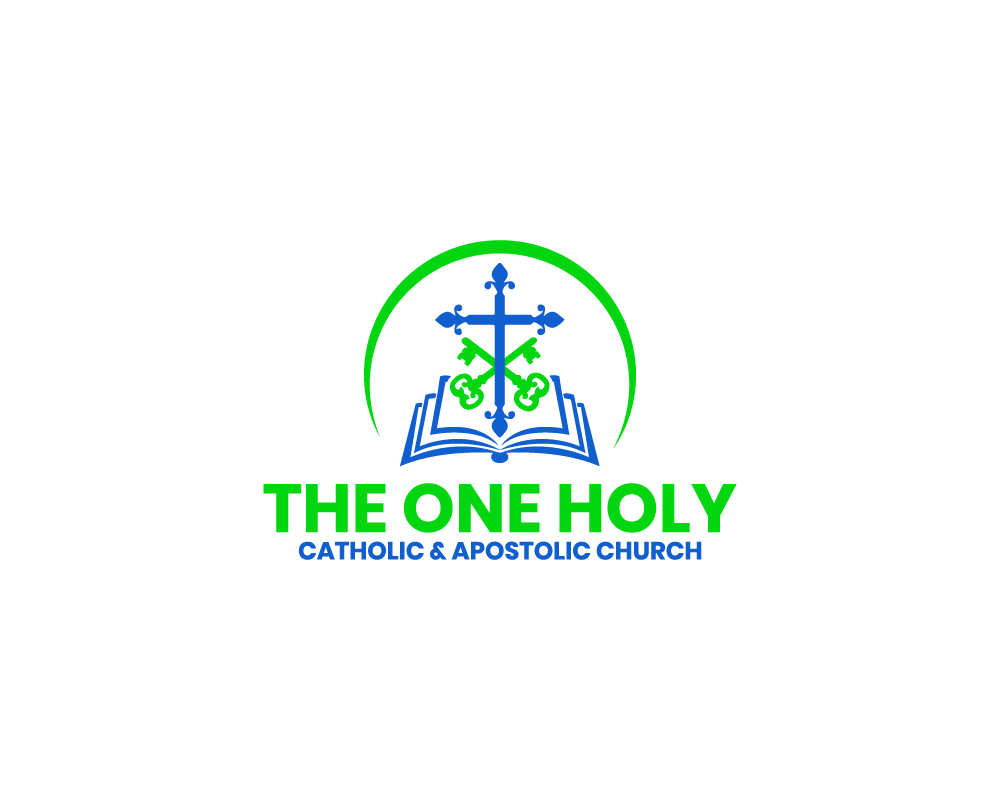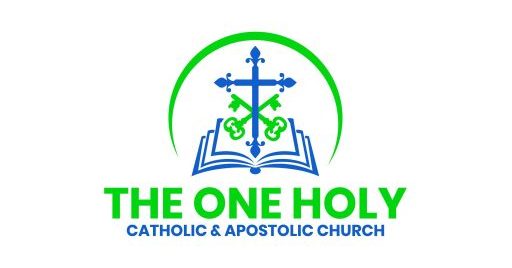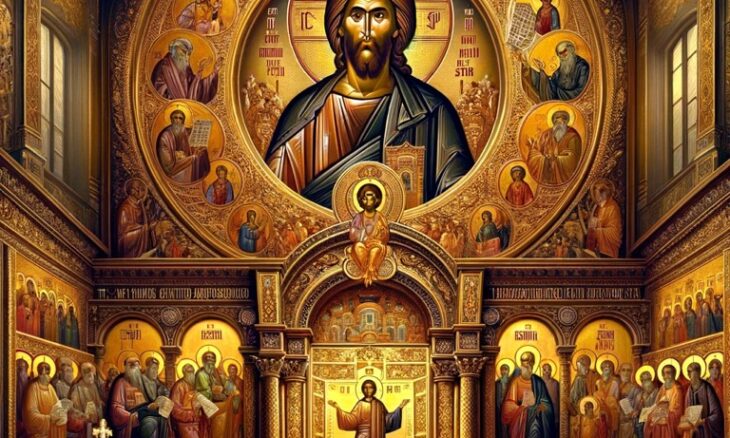From the Eastern Orthodox viewpoint, Christology – the study of the person and work of Jesus Christ – is foundational to our faith. This blog post examines these central beliefs, contrasting them with historical challenges and highlighting the Orthodox Church’s commitment to the doctrine established by the early Church.
1. The Eastern Orthodox Standpoint on Christology:
- Divinity of Christ: Eastern Orthodoxy aligns with the early church fathers, Roman Catholicism, and Protestantism in affirming Christ’s divinity. This belief is rooted in scriptural references, such as John 1:1 and John 20:28, which unequivocally declare Jesus as God.
- The Mystery of the Incarnation: The incarnation, God becoming flesh in Jesus Christ, is a profound expression of divine love and humility. It unites divine and human natures in Christ, a core belief in Orthodox theology.
2. Addressing Historical Challenges:
- Countering Early Heresies: The early Church confronted several heresies. For instance, Gnosticism presented a dualistic worldview, complicating the understanding of Christ’s incarnation.
- Refuting Docetism and Apollinarianism: These heresies questioned Christ’s human experiences. The Second Ecumenical Council robustly reaffirmed Christ’s full humanity and divinity.
- Arianism and Its Repercussions: Arianism, denying Christ’s full divinity, prompted the pivotal Council of Nicaea in 325, which affirmed the homoousios (consubstantiality) of the Son with the Father, countering the Arian perspective.
3. The Role of the Ecumenical Councils:
- Clarifying Orthodox Doctrine: The first seven ecumenical councils are central in Eastern Orthodoxy. They played a key role in addressing heretical teachings and establishing clear doctrinal positions on Christ and the Trinity.
4. The Current Orthodox Position:
- Upholding Ancient Traditions: Today, Eastern Orthodoxy steadfastly adheres to the teachings of the Church Fathers, ecumenical council decisions, and the Nicene Creed, guiding our understanding of Christology.
5. Engaging with Contemporary Theology:
- Dialogue with Modern Perspectives: While deeply rooted in ancient tradition, the Orthodox Church also engages with contemporary theological discussions, enriching and deepening our comprehension of the eternal truths of our faith.
In essence, Eastern Orthodoxy’s approach to Christology is marked by reverence, depth, and an unbroken connection to the early Church. It resolutely upholds the dual nature of Jesus Christ as both fully divine and human, a truth as pertinent in contemporary times as in the earliest days of Christianity.
- Question: How does Eastern Orthodoxy interpret Christ’s nature as both human and divine?
- Answer: Eastern Orthodoxy upholds that Christ is fully divine and fully human. This belief is central to Orthodox Christology, affirming that in the incarnation, Christ, the second person of the Trinity, took on human flesh without losing His divine nature, a mystery deeply revered in Orthodox theology.
- Question: What is the significance of the Nicene Creed in Eastern Orthodox Christology?
- Answer: The Nicene Creed is pivotal in Eastern Orthodox Christology. It articulates the Church’s beliefs about Christ’s divinity and humanity, and the nature of the Trinity. The Creed, especially its original form without the Filioque clause, is a foundational statement of faith in Orthodoxy.
- Question: How did the Ecumenical Councils shape Orthodox understanding of Jesus Christ?
- Answer: The Ecumenical Councils, particularly the first seven, were crucial in defining Orthodox Christology. They addressed heresies and clarified the Church’s teachings on the nature of Christ and the Trinity, thus shaping the Orthodox understanding of Jesus as both fully divine and fully human.
- Question: How does Eastern Orthodoxy view the historical challenges to Christ’s divinity, such as Arianism?
- Answer: Eastern Orthodoxy views historical challenges like Arianism – which denied Christ’s divinity – as significant heresies. The Orthodox Church has always staunchly defended the belief in Christ’s full divinity, as evidenced in the Council of Nicaea’s refutation of Arianism.
- Question: What role do the Church Fathers play in Eastern Orthodox Christology?
- Answer: The Church Fathers are highly revered in Eastern Orthodoxy for their theological contributions, particularly in Christology. Their writings and teachings help articulate and defend the Orthodox understanding of Christ’s nature and the doctrine of the Trinity.
- Question: In what way does Eastern Orthodoxy’s Christology differ from Western Christian traditions?
- Answer: One key difference is the approach to the Trinity, especially regarding the procession of the Holy Spirit (the Filioque controversy). Eastern Orthodoxy also tends to emphasize the mystical and apophatic (knowledge of God obtained through negation) aspects of Christology more than Western traditions.
- Question: How is the doctrine of the incarnation central to Eastern Orthodox faith and practice?
- Answer: The doctrine of the incarnation is central in Eastern Orthodoxy as it signifies God’s humility and love in becoming human. This belief is not only theological but also deeply influences Orthodox liturgy, iconography, and spiritual practice.
- Question: Does Eastern Orthodoxy consider the human nature of Christ as less important than His divine nature?
- Answer: No, Eastern Orthodoxy holds that Christ’s human nature is as important as His divine nature. This belief is essential to the Orthodox understanding of salvation and theosis (deification), where humans are called to become like God in His energies.
- Question: How does Eastern Orthodoxy interpret Christ’s role in salvation?
- Answer: In Eastern Orthodoxy, Christ’s role in salvation is understood through His incarnation, crucifixion, and resurrection. Christ’s defeat of death and sin through His resurrection is seen as opening the way for humans to unite with God, achieving theosis.
- Question: What is the Orthodox stance on the interplay between Christ’s divinity and humanity in His earthly ministry?
- Answer: Eastern Orthodoxy teaches that in Christ’s earthly ministry, His divinity and humanity were perfectly united yet distinct. This union is seen as essential for the salvific work of Christ, enabling Him to fully relate to and redeem humanity.
Fun Fact About Christology
The claims of Neochalcedonian Christology were accepted at the Council of Constantinople of 553 and so imposed on all Catholic Christendom, even in the West, where Chalcedonian doctrine in the strict sense clearly received greater consent; but they were insufficient to disarm monophysite hostility. The last attempt to meet the monophysites halfway was the doctrine of *monoenergism and monothelitism (1st decades of the 7th c.): since the monophysites affirmed in Christ one hypostasis, one nature, and one will and operation, this doctrine, while affirming two natures in Christ, made his willing and acting originate not from the two natures but from the hypostasis, i.e., the subject, which is single, so that a single will and a single operation, divine and human, originate from it. This doctrine was opposed not just by the monophysites but also by many Catholics, who saw it as too great a concession to monophysitism. Meanwhile the political motivations that had decisively influenced the various Catholic attempts to reach an understanding with the monophysites decreased when *Egypt and *Syria, the strongholds of the *heretics, passed under Arab rule. The condemnation of monoenergism and monothelitism at the Council of Constantinople of 680–681 put an end to the christological controversies, confirming the decisions of 451 and 553, expressions of a Christology which had sought to harmonize the conflicting demands of safeguarding both the integrity of Christ’s divine and human components and his unity of subject, demands considered nonnegotiable for a right understanding of the Christian message of salvation.
Simonetti, Manlio. “Christology.” Ed. Angelo Di Berardino and James Hoover. Trans. Joseph T. Papa, Erik A. Koenke, and Eric E. Hewett. Encyclopedia of Ancient Christianity 2014: 515. Print.



